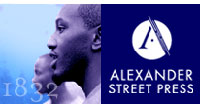Zoar Village State Memorial [OH]
Founded by the German religious dissenters called the Society of Separatists of Zoar in 1817 as a communal society, Zoar today is an island of Old-World charm in east-central Ohio. Many of the German-style structures built by the Zoarites have been restored and are open to the public as Zoar Village State Memorial. Others are privately-owned, and serve as residences, shops, restaurants, and bed and breakfast inns. Visitors can experience the life of the agrarian Separatists by visiting the ten restored buildings (Number One House, Kitchen/Magazine Complex, Bimeler Museum, Garden House, Bakery, Tinshop, Dairy, Wagon Shop, Blacksmith Shop and Zoar Store), which are staffed with costumed interpreters and furnished with items made or used by the Separatists. Some buildings are staffed, others open by guided tour. Volunteers give craft demonstrations during the many yearly special events.
A second website, for the Zoar Community Association, can be found here.
The site offers exhibits, tours, demonstrations, classes and other educational programs, and recreational and educational events.
![Photo, detail from "Immigrants aboard a ship heading for the Port of New York," 1892, American Family Immigration History Center Photo,"Immigrants aboard [...],"1892, American Family Immigration History Center](/sites/default/files/website_image/EllisIsland.jpg)
